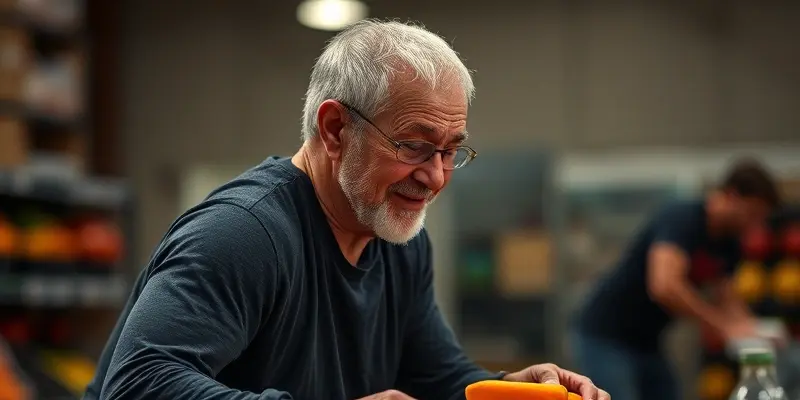Staying active as we age is a fantastic way to keep body and mind sharp. But with every year, recovery takes longer—and injuries can mean more downtime. The good news? The right nutrition can give senior athletes an edge in bouncing back, preventing injuries, and performing at their best.
Why Senior Athletes Have Different Needs
Let’s face it: our bodies change with age. Muscle mass naturally declines, bones lose density, and joints can stiffen up. These shifts don’t just impact performance—they also slow down recovery from tough workouts or injuries. So how do we bridge this gap?
Science shows that what you eat becomes even more important. Strategic nutrition helps senior athletes:
- Maintain muscle and bone strength
- Reduce the risk of injuries
- Speed up recovery after training or setbacks
Think of your nutrition as a toolkit. The right fuel helps your body repair itself efficiently—even when biology starts to work against you.
Macronutrients 101 for Senior Recovery
Let’s break down the big three: protein, carbohydrates, and fats. Each plays a unique role in keeping you strong, energized, and injury-resistant.
Protein: The Repair Crew
As we age, the body’s response to protein becomes less efficient. That means senior athletes need a bit more to stimulate muscle repair and growth. Aim for:
- About 1.2 grams per kilogram of body weight per day
- 35–45 grams per meal, including at least 3 grams of leucine (an amino acid found in animal proteins)
After workouts or injuries, protein helps rebuild muscle fibers and reduce inflammation. Great sources include:
- Skinless chicken or turkey
- Greek yogurt and cottage cheese
- Eggs and fish (like salmon)
- Plant-based options: tofu, tempeh, edamame
Try this: After a workout, enjoy a savory omelet with veggies and cheese, or a bowl of Greek yogurt with nuts and berries.
Carbohydrates: The Recharger
Carbs are not just for marathoners! They’re your primary energy source and help replenish muscle glycogen after exercise. Senior athletes need at least 3–5 grams per kilogram of body weight per day, and possibly more for intense or long-duration activities.
Focus on whole-food carbs like:
- Oatmeal, quinoa, brown rice
- Sweet potatoes, beans, and lentils
- Fresh fruits and plenty of vegetables
Sample snack: A slice of whole-grain toast with banana and peanut butter is ideal for refueling.
Fats: The Protectors
Healthy fats support joint health, fight inflammation, and help absorb fat-soluble vitamins. Keep them to 20–35% of your daily calorie intake, prioritizing sources like:
- Fatty fish (salmon, mackerel)
- Walnuts, flaxseeds, and chia seeds
- Avocado and olive oil
Omega-3 fats, in particular, are known for their anti-inflammatory benefits—think of them as your natural defense against nagging aches and joint pain.
Building Your Optimal Meal Plan
How do you put this all together? Here’s a sample “recovery day” plan for a senior athlete:
- Breakfast: Oatmeal with Greek yogurt, walnuts, and berries (protein + carbs + healthy fats)
- Lunch: Grilled chicken breast, quinoa salad, and steamed broccoli (protein + carbs + fiber)
- Snack: Hummus with carrot sticks and a hard-boiled egg (protein + healthy fats)
- Dinner: Baked salmon, sweet potato, sautéed spinach (protein + carbs + omega-3s)
- Hydration: Water with every meal; add an electrolyte drink post-workout
Special Considerations
- Micronutrients: Seniors need more vitamin D, calcium, B12, magnesium, and zinc for bone and immune health. For guidance on strengthening your bones and enhancing recovery, consider our article on calcium for bone strength.
- Creatine: Daily supplementation (5g) may aid muscle strength and reduce recovery time.
- Hydration: Don’t trust thirst alone. Set reminders to drink regularly—dehydration sneaks up faster as we age.
Practical Tips to Stay Consistent and Motivated
- Prep ahead: Cook protein and grains in batches for easy meals
- Mix it up: Rotate ingredients to keep things interesting and nutritionally balanced
- Buddy system: Share recovery meals or workouts with a friend for accountability
- Celebrate progress: Track your performance and recovery—you’ll be surprised how much nutrition helps!
Conclusion: Take Charge of Your Recovery
A strategic approach to macronutrients isn’t just for bodybuilders or Olympians. Whether you’re chasing a personal best, recovering from an injury, or just want to keep moving pain-free, dialing in your nutrition is one of the smartest investments you can make as a senior athlete.
Take action today: try a protein-rich breakfast, add some extra greens to your plate, or set a hydration goal for tomorrow’s workout. Small steps, big payoffs—your future self will thank you!

